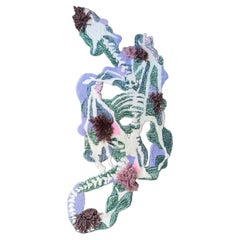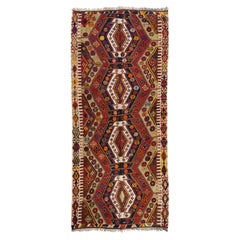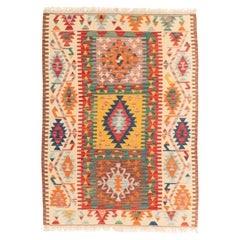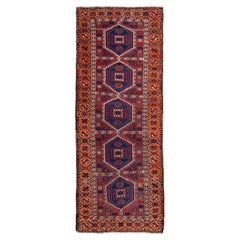Caucasian Rugs
2010s Post-Modern Caucasian Rugs
Wool, Mohair
Mid-20th Century Kilim Caucasian Rugs
Wool, Natural Fiber
2010s Kilim Caucasian Rugs
Wool, Natural Fiber
Mid-20th Century Kilim Caucasian Rugs
Wool, Natural Fiber
Early 20th Century Country Caucasian Rugs
Wool
Mid-20th Century Oushak Caucasian Rugs
Wool, Natural Fiber
Mid-20th Century Tribal Caucasian Rugs
Wool
Mid-20th Century Kilim Caucasian Rugs
Wool, Natural Fiber
2010s Kilim Caucasian Rugs
Wool, Natural Fiber
Late 20th Century Kilim Caucasian Rugs
Wool, Natural Fiber, Organic Material
Early 20th Century Kilim Caucasian Rugs
Wool, Natural Fiber
Late 20th Century Kilim Caucasian Rugs
Wool, Cotton, Natural Fiber
Late 19th Century Oushak Antique Caucasian Rugs
Wool, Natural Fiber, Organic Material
Late 20th Century Kilim Caucasian Rugs
Wool, Cotton, Natural Fiber
21st Century and Contemporary Revival Caucasian Rugs
Wool, Natural Fiber, Organic Material
21st Century and Contemporary Revival Caucasian Rugs
Wool, Natural Fiber, Organic Material
Late 20th Century Kilim Caucasian Rugs
Wool, Cotton, Natural Fiber
Early 20th Century Oushak Caucasian Rugs
Wool, Natural Fiber, Organic Material
Late 20th Century Kilim Caucasian Rugs
Wool, Cotton, Natural Fiber
Early 20th Century Oushak Caucasian Rugs
Wool, Natural Fiber
Mid-20th Century Kilim Caucasian Rugs
Wool, Natural Fiber, Organic Material
21st Century and Contemporary Revival Caucasian Rugs
Wool, Natural Fiber, Organic Material
Early 20th Century Kilim Caucasian Rugs
Wool, Natural Fiber
21st Century and Contemporary Revival Caucasian Rugs
Wool, Natural Fiber, Organic Material
21st Century and Contemporary Oushak Caucasian Rugs
Wool, Natural Fiber, Organic Material
21st Century and Contemporary Revival Caucasian Rugs
Wool, Natural Fiber, Organic Material
Mid-20th Century Kilim Caucasian Rugs
Wool, Natural Fiber
1970s Kilim Vintage Caucasian Rugs
Wool, Natural Fiber, Organic Material
Early 20th Century Kilim Caucasian Rugs
Wool, Natural Fiber, Organic Material
2010s Kilim Caucasian Rugs
Wool, Natural Fiber
Early 20th Century Kilim Caucasian Rugs
Wool, Natural Fiber
Mid-20th Century Kilim Caucasian Rugs
Wool, Natural Fiber, Organic Material
Late 20th Century Kilim Caucasian Rugs
Wool, Natural Fiber
Early 20th Century Kilim Caucasian Rugs
Wool, Natural Fiber
Early 20th Century Oushak Caucasian Rugs
Wool, Natural Fiber
Late 20th Century Kilim Caucasian Rugs
Wool, Natural Fiber
Late 19th Century Oushak Antique Caucasian Rugs
Wool, Natural Fiber, Organic Material
Late 20th Century Kilim Caucasian Rugs
Wool, Natural Fiber
Mid-20th Century Kilim Caucasian Rugs
Wool, Natural Fiber
21st Century and Contemporary Oushak Caucasian Rugs
Wool, Natural Fiber, Organic Material
Late 20th Century Oushak Caucasian Rugs
Wool, Natural Fiber
2010s Kilim Caucasian Rugs
Wool, Natural Fiber
Mid-20th Century Kilim Caucasian Rugs
Wool, Natural Fiber
21st Century and Contemporary Revival Caucasian Rugs
Organic Material, Natural Fiber, Wool
21st Century and Contemporary Oushak Caucasian Rugs
Wool, Natural Fiber, Organic Material
Late 20th Century Kilim Caucasian Rugs
Wool, Cotton, Natural Fiber
1950s Tribal Vintage Caucasian Rugs
Wool
2010s Kilim Caucasian Rugs
Wool, Natural Fiber
Late 20th Century Kilim Caucasian Rugs
Wool, Natural Fiber, Organic Material
Mid-20th Century Kilim Caucasian Rugs
Wool, Natural Fiber
Early 20th Century Kilim Caucasian Rugs
Wool, Natural Fiber
Mid-20th Century Kilim Caucasian Rugs
Wool, Natural Fiber
21st Century and Contemporary Oushak Caucasian Rugs
Wool, Natural Fiber, Organic Material
Late 19th Century Oushak Antique Caucasian Rugs
Wool, Natural Fiber, Organic Material
Late 20th Century Kilim Caucasian Rugs
Wool, Natural Fiber, Organic Material
2010s Kilim Caucasian Rugs
Wool, Natural Fiber
Mid-20th Century Kilim Caucasian Rugs
Wool, Natural Fiber, Organic Material
Mid-20th Century Kilim Caucasian Rugs
Wool, Natural Fiber
2010s Kilim Caucasian Rugs
Wool, Natural Fiber
Late 19th Century Oushak Antique Caucasian Rugs
Wool





